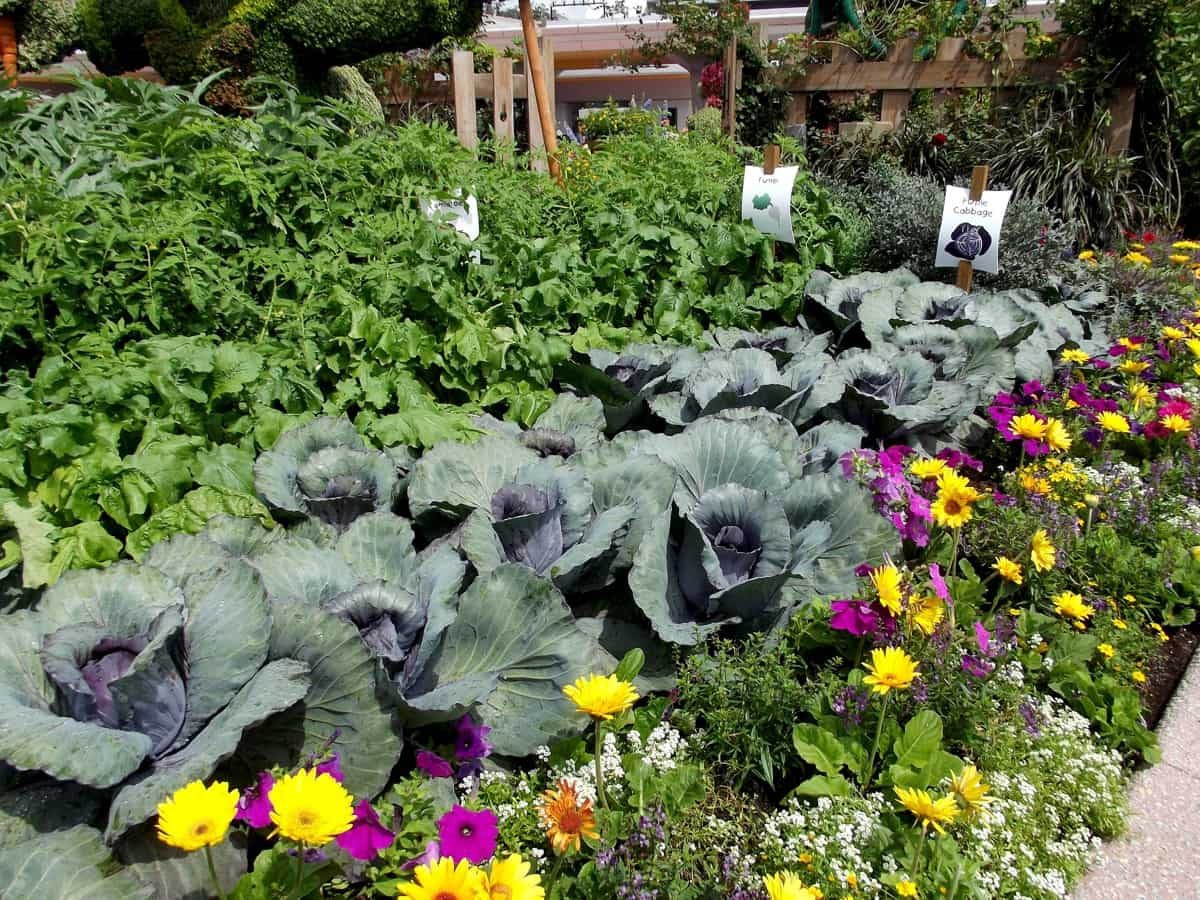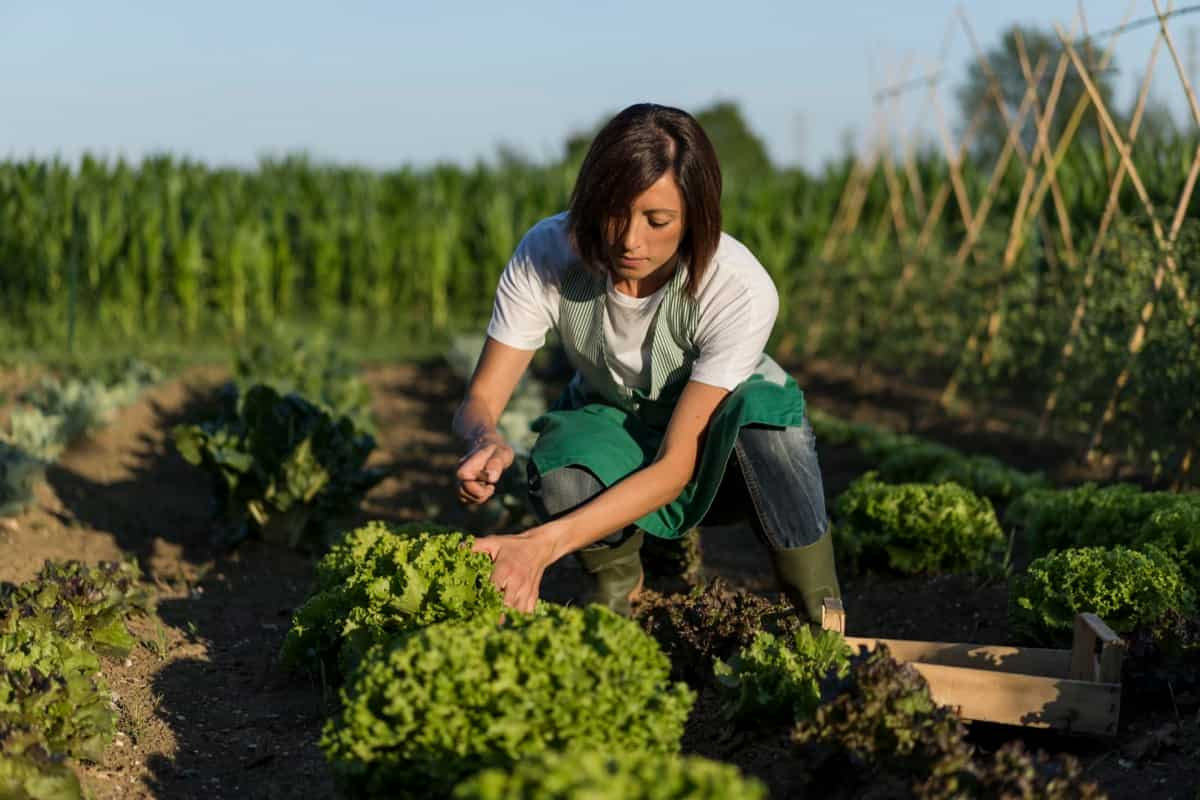Outdoor gardening can be a rewarding and fulfilling hobby. However, it is not without its challenges. You can minimize the risk of encountering common problems by implementing good practices. Gardening is a constant learning process; there will always be new challenges. The key is to stay informed about best practices and remain observant of changes in your garden environment so that you can intervene early when necessary.

12 Common Problems with Outdoor Gardening
Natural Remedies for Controlling Slugs in Outdoor Gardens
One effective method is creating barriers around your garden beds. Slugs hate crossing sharp objects like crushed eggshells or diatomaceous earth. Sprinkling these substances around your plants creates an uncomfortable path for slugs, deterring them from venturing further. Another natural solution is using beer traps. Bury a container up to its rim in the soil and fill it with beer.
Garlic water or neem oil can work wonders for those who prefer organic sprays. Mix either concoction with water and spray directly onto affected areas or surrounding foliage to create a deterrent scent slugs dislike. Regularly removing debris from your garden also helps reduce slug-hiding spots. Clutter-free spaces give slugs fewer places to hide during the day when they’re most active.
Preventing Blossom End Rot in Outdoor Tomato Plants
Calcium deficiency in the soil causes blossom end rot. To prevent this, ensure that your soil has adequate calcium levels by adding lime or gypsum before planting. Additionally, maintaining consistent moisture levels in the soil is crucial. Fluctuations in the water supply can inhibit calcium uptake by the plant roots. Mulching around tomato plants can also help regulate soil moisture and temperature.
Avoid over-fertilizing with nitrogen-rich fertilizers, as they can interfere with calcium absorption. Instead, opt for balanced fertilizers or those specifically formulated for tomatoes. Regularly inspecting your plants for any signs of stress or disease will also go a long way in preventing blossom end rot. Address any issues promptly to minimize their impact on overall plant health.
Managing Powdery Mildew on Outdoor Garden Leaves
Powdery mildew is a common problem many gardeners face in outdoor gardening. This fungal disease can affect various plants, leaving a powdery white coating on the leaves, stems, and flowers. Not only does it look unsightly, but powdery mildew can also stunt plant growth and reduce yields. One natural remedy is to use a mixture of baking soda and water.
In case you missed it: Best Planter Materials to Use Indoors or Outdoors

Mix one tablespoon baking soda with one gallon of water and spray it onto the affected plants. This solution helps to create an alkaline environment that inhibits the growth of powdery mildew. Another option is to use neem oil, which has antifungal properties. Dilute the neem oil according to the instructions on the bottle and apply it directly to the infected leaves. Neem oil controls powdery mildew and prevents other pests in your garden.
Additionally, proper airflow is crucial in preventing powdery mildew from spreading. Make sure there’s enough space between plants, or consider pruning overcrowded areas to improve air circulation. Regularly inspecting your plants for early signs of infection allows you to catch any outbreaks before they become widespread. If you notice any affected leaves or stems, remove them immediately and dispose of them away from your garden area.
Addressing Root Rot Issues in Outdoor Garden Beds
Root rot is a common problem many gardeners face in outdoor gardening. It can be caused by various factors such as overwatering, poor drainage, or fungal infections. One effective solution is to ensure proper drainage in your garden beds. Add organic matter into the soil before planting. These amendments help improve soil structure and allow excess water to drain from the roots. Another preventive measure is to avoid overwatering your plants.
While providing enough moisture for healthy growth is important, excessive watering can lead to waterlogged soil and create prime conditions for root rot development. In addition, practicing crop rotation can also help reduce the risk of root rot. By rotating crops each season, you prevent the buildup of pathogens that cause root diseases like rot. This helps maintain overall plant health and reduces the chances of encountering root-related issues. Furthermore, choosing resistant plant varieties can make a significant difference in preventing root rot problems.
Some plant species have natural resistance against certain pathogens or environmental conditions that contribute to root rot formation. Regularly inspecting your plants for signs of stress or disease is crucial for early detection and treatment of potential issues like root rot. Take action immediately if you notice wilting leaves, stunted growth, or discolored roots. Remove affected plants promptly to prevent further spread, and treat them with appropriate fungicides if necessary.
Protecting Outdoor Plants from Hail Damage
Hailstorms can wreak havoc on your outdoor garden, causing damage to delicate plants and leaving you feeling frustrated. One effective method is to provide shelter for your plants. If you have smaller potted plants, move them indoors or under a covered area when a hailstorm is forecasted. For larger garden beds, consider using protective covers made of cloth or netting that allow sunlight and water to reach the plants while shielding them from hailstones.
In case you missed it: 17 Best Flowering Succulents: For Indoors and Outdoors

Preventing Weed Growth in Outdoor Garden Beds Organically
One effective way to prevent weed growth is through mulching. By spreading a layer of organic mulch, such as straw or wood chips, around your plants, you create a barrier that blocks sunlight from reaching the soil surface. This deprives weed seeds of the light they need to germinate and grow.
Cover cropping is yet another technique that can help control weeds organically. Planting cover crops like clover or buckwheat during fallow periods helps smother existing weeds and improves soil health. Regular maintenance is key in preventing weed growth organically. Be vigilant about removing any new sprouts as soon as they appear before they have a chance to establish themselves.
Managing Yellowing Leaves in Outdoor Garden Plants
Nutrient deficiencies, like a lack of nitrogen or iron in the soil, can cause yellowing leaves. To remedy this, you can try fertilizing your plants with a balanced organic fertilizer or adding compost to enrich the soil. Additionally, make sure your plants are getting adequate sunlight and water.
Another possible reason for yellowing leaves is overwatering or poor drainage. When roots are constantly sitting in waterlogged soil, they become deprived of oxygen and nutrients, leading to leaf discoloration. To combat this issue, ensure your garden beds have proper drainage and avoid watering too frequently.
Pests can also contribute to yellowing leaves. Common culprits include aphids and spider mites. Use natural methods like spraying diluted neem oil or introducing beneficial insects to control these pests without harming the environment. The disease is another potential cause of yellowing leaves. Fungal infections like root rot or fusarium wilt can lead to leaf discoloration. It’s crucial to promptly remove infected plants and treat healthy ones with appropriate fungicides.
Controlling Caterpillar Infestations in Outdoor Gardens
Caterpillars can be a nightmare for gardeners, munching away on leaves and wreaking havoc on your outdoor plants. It’s important to identify the type of caterpillar causing the infestation. This will help you determine the best course of action. Some common culprits include cabbage worms and tomato hornworms. One natural method to control caterpillars is handpicking them off your plants.
In case you missed it: Best Ways to Get Rid of Thrips on Plants: Naturally, Organically for Indoors and Outdoors

Wear gloves and remove any visible caterpillars you come across. Another option is biological controls like beneficial nematodes or parasitic wasps targeting specific caterpillars. Regularly inspect your garden for signs of new infestations and take prompt action if necessary. By implementing these strategies, you can effectively combat pesky caterpillar invasions without resorting to harmful chemicals.
Addressing Nutrient Deficiencies in Outdoor Vegetable Gardens
| Nutrient deficiency | Symptoms | Prevention and treatment measures |
| Nitrogen | The plant’s leaves are turning yellow. | Consider incorporating compost or well-rotted manure into the soil before planting. |
| Potassium | Developing brown spots on leaves. | Adding wood ash or banana peels to the soil can help boost levels naturally. Both contain high amounts of potassium and can be worked into the garden beds around your plants. |
| Iron | Pale yellow leaves with dark green veins. | To combat this issue, try adding chelated iron supplements to the soil or spraying foliage with an iron-rich foliar spray. |
Dealing With Drought Stress in Outdoor Plants
Drought stress can be a major problem for outdoor plants, especially during the hot summer. When water is scarce, plants suffer from dehydration, and their growth can be stunted. To ensure the health and vitality of your garden during periods of drought, there are several measures you can take. Proper watering techniques are crucial. Instead of frequent shallow watering, it is better to soak the soil less often deeply. This encourages plants to develop deep root systems that can access water stored deeper in the ground.
Mulching is another effective strategy. Apply organic mulch base of your plants to maintain moisture in the soil and prevent evaporation. Choosing drought-tolerant plant varieties is also important. Native or adapted species have evolved to survive in arid conditions and will require less water than exotic species. Regular monitoring of soil moisture levels will help you determine when it’s time to water your plants. Consider using shade cloth or other forms of shading to protect your plants from excessive heat and sun exposure during peak hours.
Managing Fungal Diseases in Outdoor Flower Gardens
Fungal diseases can wreak havoc on the health and beauty of your outdoor flower gardens. These pesky infections, caused by various fungi, can lead to wilting, discoloration, and even death of your beloved blooms. It’s essential to ensure proper air circulation around your plants. Trim back any overgrown foliage or branches that may impede airflow. This will help reduce humidity levels and create an environment less conducive to fungal growth.
In case you missed it: Top 10 Pollution killer Plants: Indoors and Outdoors

In addition to promoting good airflow, watering practices are crucial in preventing fungal diseases. Another useful technique is practicing crop rotation. By rotating flower varieties each year within different beds or areas of your garden, you minimize the chance of specific funguses becoming established in one location.
It’s also wise to regularly inspect your plants for early signs of infection, such as discolored spots or powdery coatings on leaves. Promptly remove any infected foliage or flowers and dispose of them properly—do not compost diseased plant material. To combat fungal diseases organically, consider using natural remedies like neem oil or copper-based fungicides that are safe for humans and beneficial insects when used correctly.
Protecting Outdoor Plants from Frost Damage
As temperatures plummet and winter sets in, frost can seriously threaten your beloved outdoor plants. The icy touch of frost can cause damage to tender foliage and delicate blooms, leaving your garden looking lackluster come springtime. One effective method is to cover your plants with blankets or sheets when frost is expected.
This extra insulation layer will help trap heat and prevent the cold air from reaching your precious greenery. Another option is to use specially designed plant covers or frost cloths that allow for air circulation while still providing protection. Strategically placing mulch around the base of your plants can also help insulate their roots and retain moisture in the soil.
Watering your plants thoroughly before a predicted freeze can provide some insulation as water releases heat slowly. If you have potted plants outdoors, consider moving them closer to buildings or other structures that may radiate some warmth during colder nights. Alternatively, relocating pots indoors or into a greenhouse overnight can offer optimal protection against freezing temperatures.
In case you missed it: 16 Best Outdoor Flowering Plants in India: How to Plant, Grow and Care

Conclusion
In tackling the common problems that arise in outdoor gardening, it’s important to remember that prevention is key. By implementing preventive measures and being proactive in your garden care routine, you can minimize the occurrence of these issues. However, even with the best precautions, some problems may still arise.
In finding solutions to common gardening problems, it’s essential to research specific remedies tailored to each issue you encounter. Every garden is unique and may require different approaches based on climate conditions and plant species. Don’t hesitate to experiment with various techniques until you find what works best for your particular outdoor space.
- Gardening Techniques in Planting Vegetables
- Where to Place Indoor Plants in Your Home
- How to Grow Tomatoes Organically at Home: A Comprehensive Guide
- Organic Gardening on a Budget: Low-Cost Methods and Materials
- Gongura Seed Germination and Planting Methods
- Cabbage Seed Germination and Selection
- Broccoli Seed Germination and Selection
- Asparagus Seed Germination and Variety Selection
- Seasonal Flower Gardening: Best Practices for Spring, Summer, Fall, and Winter
- How to Grow Hibiscus from Flower
- Plantation Ideas for Home Decoration: A Beginners Guide
- Flower Garden Designs and Layouts for Beginners
- Planting and Spacing Techniques in Papaya: A Beginner’s Guide
- Growing Gold: Essential Techniques for Planting Pineapples
- How to Make Kalanchoe Plant Bushy: Home Remedies and Solutions
- 11 Reasons Why Your Gardenia is Not Blooming: Home Remedies and Solutions
- Eco Elegance: The Guide to Designing a Drought-Tolerant Landscape
- Gardening on a Slope: Strategies for Hillside Landscaping
- Nourish and Flourish: Top Organic Mulches for Thriving House Plants
- Everything You Want to Know about Indian Mogra Flower: Discover Uses and Growing
- Green Thumb Success: Expert Tips for Cultivating Greenhouse Pumpkins All Year Round
- Maximize Growth & Flavor: The Ultimate Guide to Companion Planting in Herb Gardens
- How to Control Rhododendron Problems Naturally: Home Remedies and Organic Ways to Fix Them
- Natural Magic: The Remarkable Benefits of Cinnamon for Plants
- Best Steps to Revive Dying Tulip with Natural and Organic Treatment
- 10 Reasons Why Your Angel Trumpet is Not Blooming: Remedies and Treatment
- How to Fix Periwinkle Leaf and Flower-Related Problems: Natural Remedies and Solutions
- How to Fix Zinnias Leaf and Flower Problems: Discover Natural and Home Remedies
- Organic Steps to Induce Lemon Tree Flowers: A Comprehensive Guide
- Bloom Booster: Crafting the Perfect Homemade Bougainvillea Fertilizer
- Optimizing Growth: A Guide to Applying NPK Fertilizer for Potted Plants
- 10 Best Homemade Fertilizers for Rubber Plant: DIY Recipes and Application Method
- How to Boost Female Pumpkin Flowers: Effective Steps for More Flowers and High Yields
- Transform Your Indoor Garden: Top Benefits of Pink Salt for Houseplants
- 10 Best Homemade Fertilizers for Peacock Plants (Calathea): Easy DIY Guide
- Unlock Blooms: 9 Reasons Why Your Potted Chrysanthemum is Not Blooming